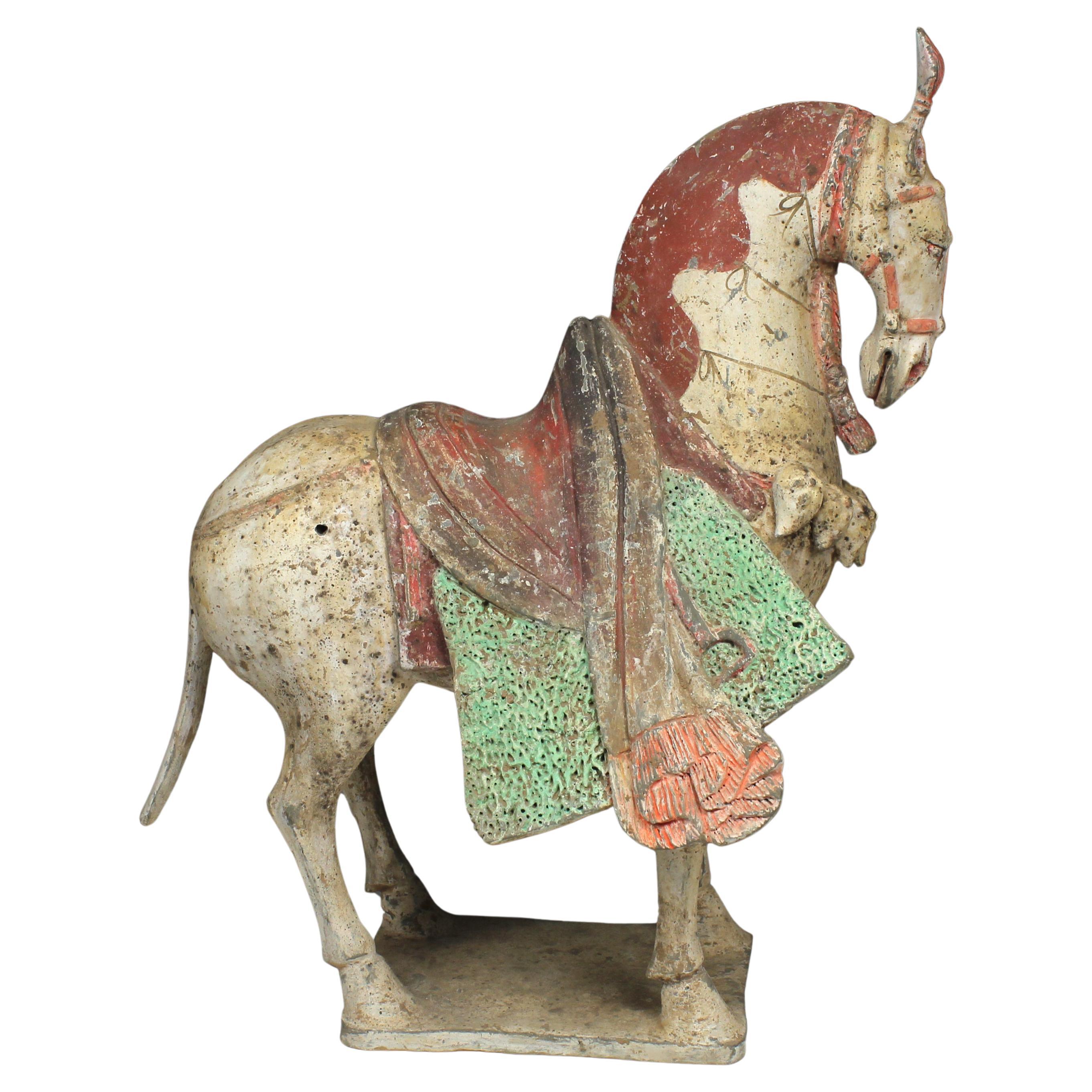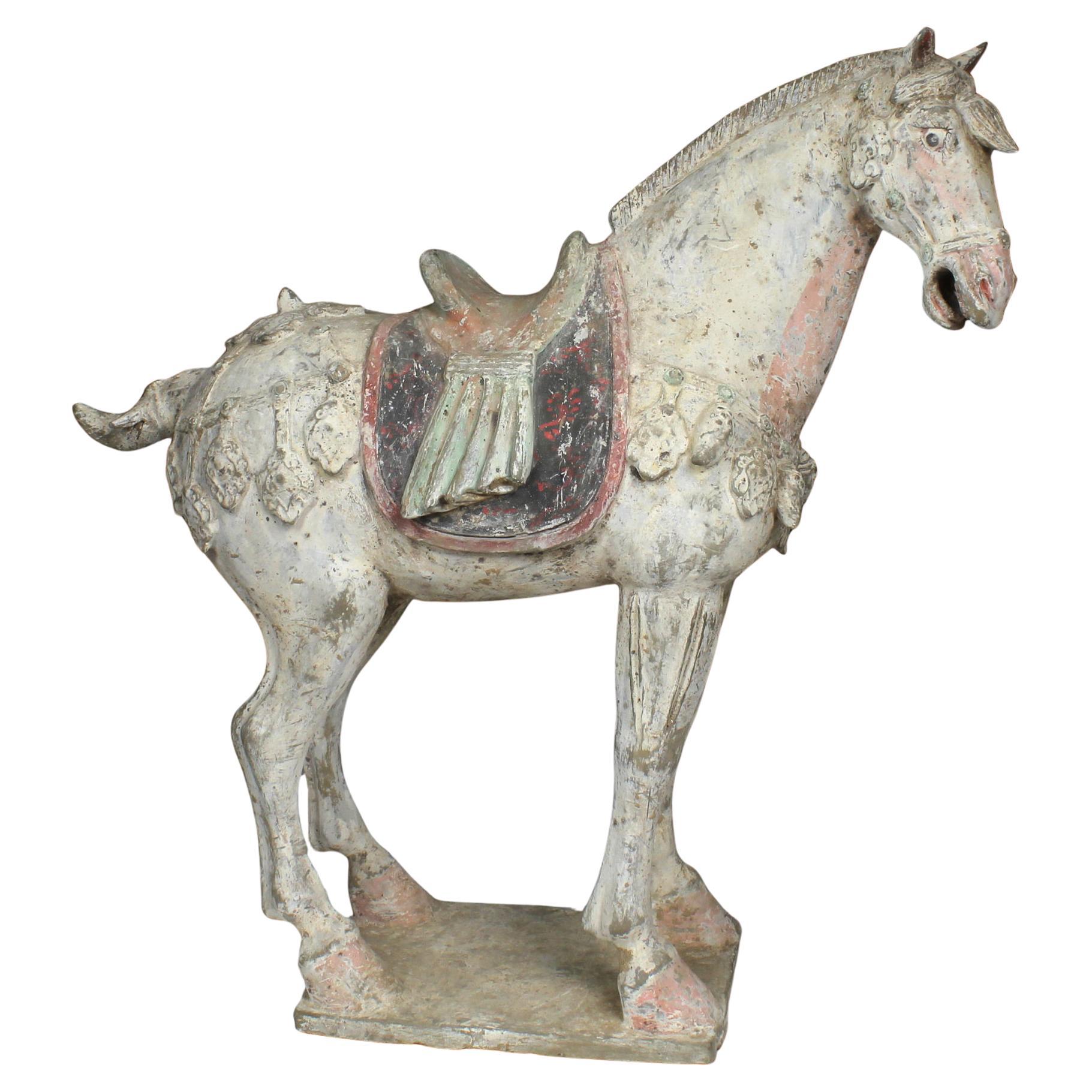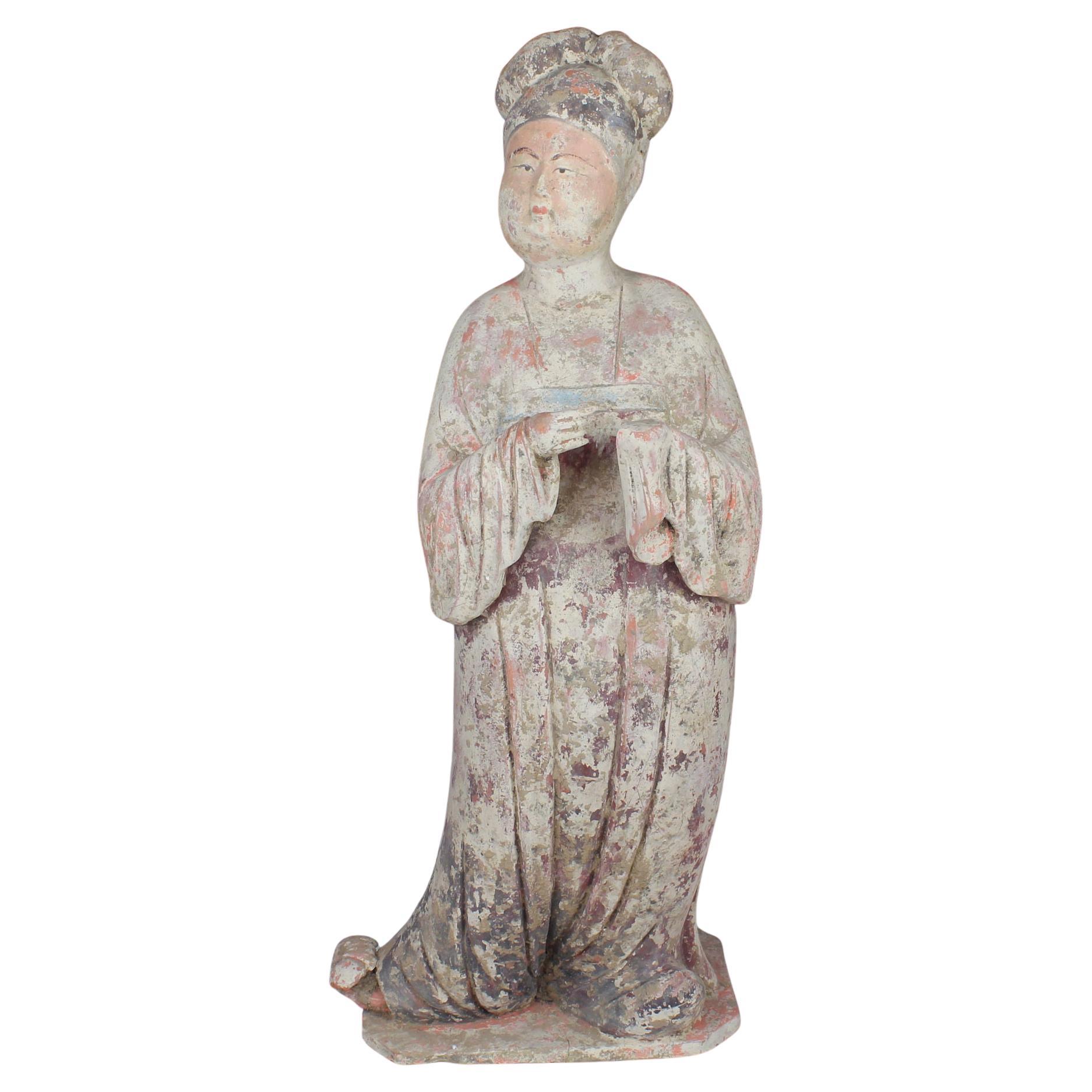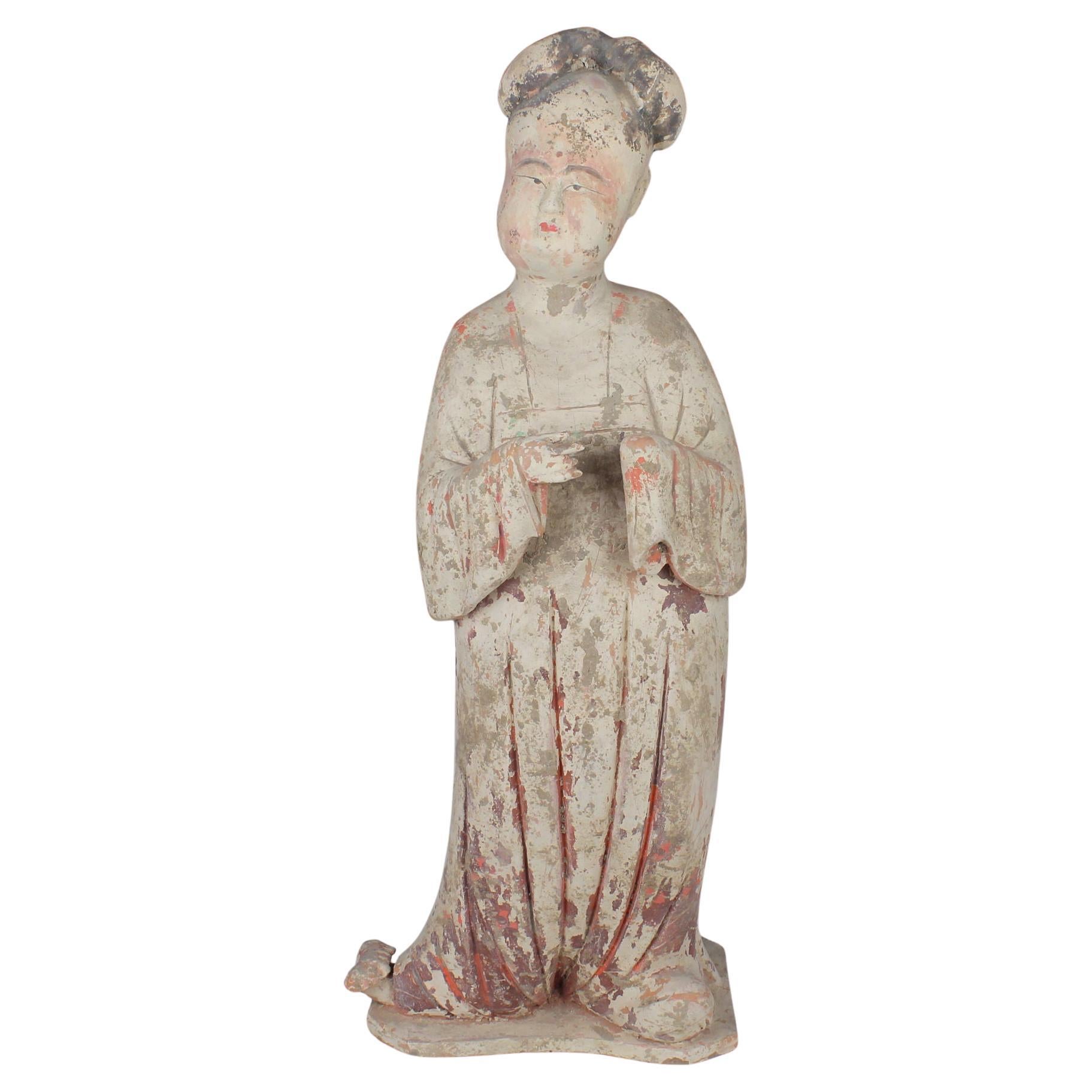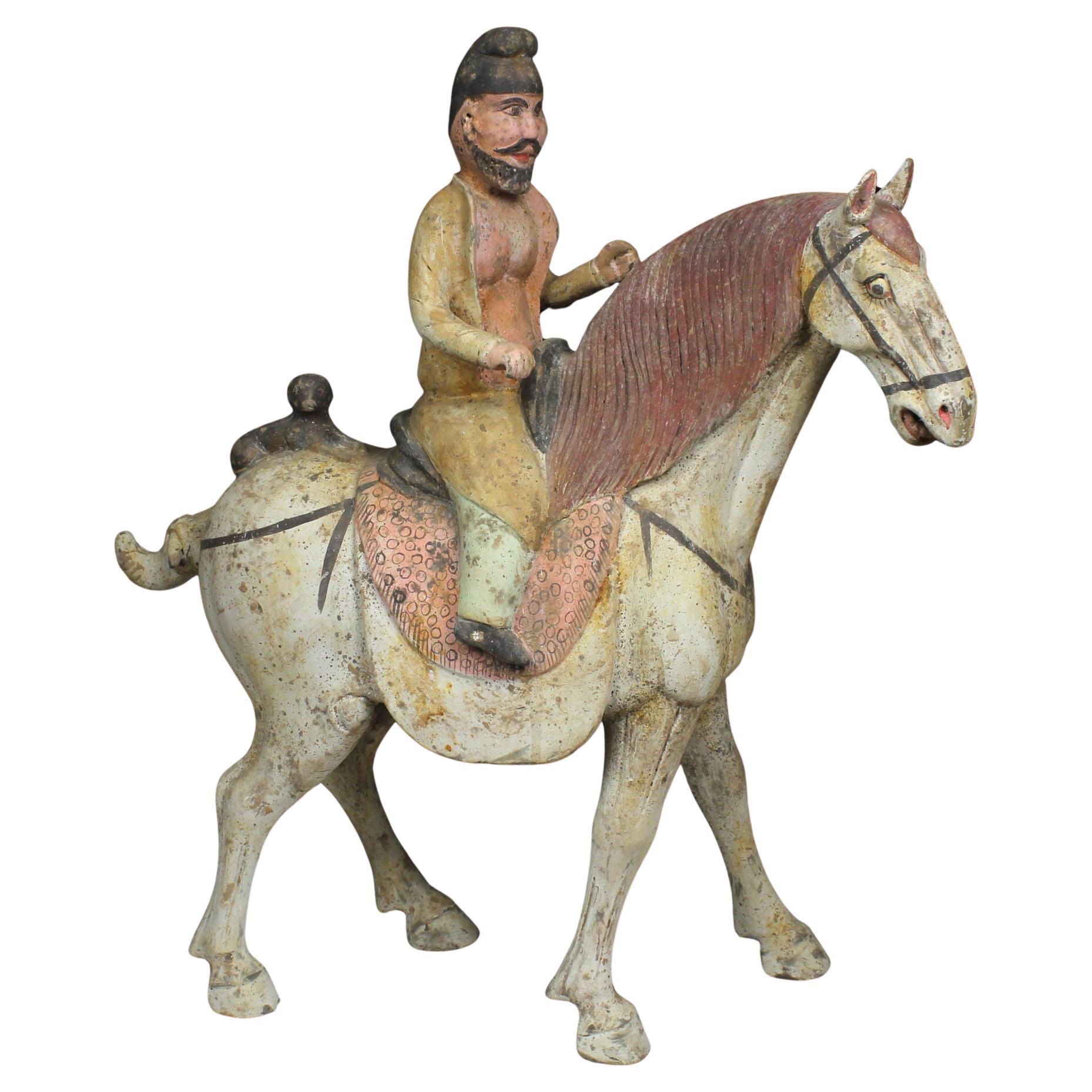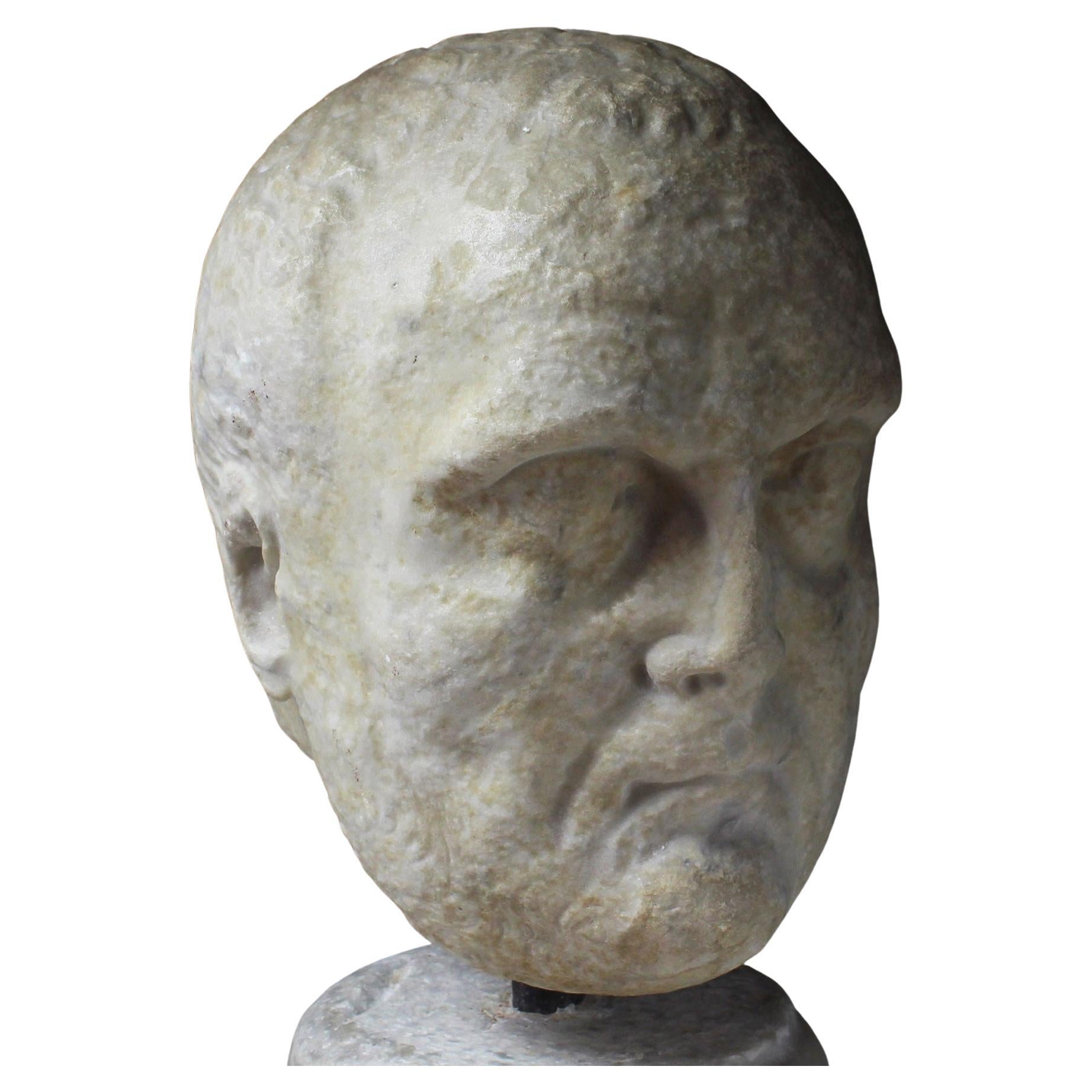Items Similar to Roman statuette of Eros-Harpocrates
Want more images or videos?
Request additional images or videos from the seller
1 of 7
Roman statuette of Eros-Harpocrates
About the Item
ITEM: Statuette of Eros-Harpocrates
MATERIAL: Bronze
CULTURE: Roman
PERIOD: 1st Century B.C – 1st Century A.D
DIMENSIONS: 82 mm x 31 mm
CONDITION: Good condition
PROVENANCE: Ex American private collection, collected between 1980 – 1990
Comes with Certificate of Authenticity and Export license (If you live outside the European Union, We will have to apply for an export licence for your country and shipping will take 3 to 5 weeks.)
Eros, in Greek religion, god of love. In the Theogony of Hesiod (fl. 700 BCE), Eros was a primeval god, son of Chaos, the original primeval emptiness of the universe, but later tradition made him the son of Aphrodite, goddess of sexual love and beauty, by either Zeus (the king of the gods), Ares (god of war and of battle), or Hermes (divine messenger of the gods).
Eros was a god not simply of passion but also of fertility. His brother was Anteros, the god of mutual love, who was sometimes described as his opponent. The chief associates of Eros were Pothos and Himeros (Longing and Desire). Later writers assumed the existence of a number of Erotes (like the several versions of the Roman Amor).
In Alexandrian poetry he degenerated into a mischievous child. In Archaic art he was represented as a beautiful winged youth but tended to be made younger and younger until, by the Hellenistic period, he was an infant. His chief cult centre was at Thespiae in Boeotia, where the Erotidia were celebrated. He also shared a sanctuary with Aphrodite on the north wall of the Acropolis at Athens.
- Dimensions:Height: 3.23 in (8.2 cm)Width: 1.23 in (3.1 cm)Depth: 0.79 in (2 cm)
- Style:Classical Roman (Of the Period)
- Materials and Techniques:
- Place of Origin:
- Period:
- Date of Manufacture:1st Century B.C – 1st Century A.D
- Condition:
- Seller Location:EL CAMPELLO, ES
- Reference Number:1stDibs: LU7382236640452
About the Seller
5.0
Vetted Seller
These experienced sellers undergo a comprehensive evaluation by our team of in-house experts.
Established in 2011
1stDibs seller since 2022
8 sales on 1stDibs
- ShippingRetrieving quote...Ships From: El Campello, Spain
- Return PolicyA return for this item may be initiated within 60 days of delivery.
More From This SellerView All
- Chinese statuette of a horseLocated in EL CAMPELLO, ESITEM: Statuette of a horse MATERIAL: Pottery CULTURE: Chinese, Northern Wei Dynasty PERIOD: 386 – 535 A.D DIMENSIONS: 404 mm x 350 mm x 230 mm CONDITION: Good condition. Includes Th...Category
Antique 15th Century and Earlier Chinese Tang Antiquities
MaterialsPottery
- Chinese statuette of a horseLocated in EL CAMPELLO, ESITEM: Statuette of a horse MATERIAL: Pottery CULTURE: Chinese, Tang Dynasty PERIOD: 618 – 907 A.D DIMENSIONS: 560 mm x 530 mm x 200 mm CONDITION: Good condition. Includes Thermolumin...Category
Antique 15th Century and Earlier Chinese Tang Antiquities
MaterialsPottery
- Chinese statuette of a Fat LadyLocated in EL CAMPELLO, ESITEM: Statuette of a Fat Lady MATERIAL: Pottery CULTURE: Chinese, Tang Dynasty PERIOD: 618 – 907 A.D DIMENSIONS: 655 mm x 265 mm x 210 mm CONDITION: Good condition. Includes Thermoluminescence test by Laboratory Kotalla (Reference 05B101123). Includes Certificate of Authenticity from Dutch gallery PROVENANCE: Ex Belgian private collection, acquired from Dutch art gallery Comes with Certificate of Authenticity and Export Licence. If you are from outside the European Union, we will have to apply for the export licence again for your country, this takes 4 to 6 weeks. Due to the fragility and size of this piece, it can only be shipped within the European Union, United Kingdom and neighbouring countries that can be transported by road by private courier (door to door). This beautifully-finished ceramic attendant was made during what many consider to be China’s Golden Age, the Tang Dynasty. It was at this point that China’s outstanding technological and aesthetic achievements opened to external influences, resulting in the introduction of numerous new forms of self-expression, coupled with internal innovation and considerable social freedom. The Tang dynasty also saw the birth of the printed novel, significant musical and theatrical heritage and many of China’s best- known painters and artists. The Tang Dynasty was created on the 18th of June, 618 AD, when the Li family seized power from the last crumbling remnants of the preceding Sui Dynasty. This political and regal regime was long-lived, and lasted for almost 300 years. The imperial aspirations of the preceding periods and early Tang leaders led to unprecedented wealth, resulting in considerable socioeconomic stability, the development of trade networks and vast urbanisation for China’s exploding population (estimated at around 50 million people in the 8th century AD). The Tang rulers took cues from earlier periods, maintaining many of their administrative structures and systems intact. Even when dynastic and governmental institutions withdrew from management of the empire towards the end of the period – their authority undermined by localised rebellions and regional governors known as jiedushi –the systems were so well- established that they continued to operate regardless. The artworks created during this era are among China’s greatest cultural achievements. It was the greatest age for Chinese poetry and painting, and sculpture also developed (although there was a notable decline in Buddhist sculptures following repression of the faith by pro-Taoism administrations later in the regime). It is disarming to note that the eventual decline of imperial power, followed by the official end of the dynasty on the 4th of June 907, hardly affected the great artistic turnover. During the Tang Dynasty, restrictions were placed on the number of objects that could be included in tombs, an amount determined by an individual’s social rank. In spite of the limitations, a striking variety of tomb furnishings – known as mingqi – have been excavated. Entire retinues of ceramic figures – representing warriors, animals, entertainers, musicians, guardians and every other necessary category of assistant – were buried with the dead in order to provide for the afterlife. Warriors (lokapala) were put in place to defend the dead, while horses/ camels were provided for transport, and officials to run his estate in the hereafter. Of all the various types of mingqi, however, there are none more elegant or charming than the sculptures of sophisticated female courtiers, known – rather unfairly – as “fat ladies...Category
Antique 15th Century and Earlier Chinese Tang Antiquities
MaterialsPottery
- Chinese statuette of a Fat LadyLocated in EL CAMPELLO, ESITEM: Statuette of a Fat Lady MATERIAL: Pottery CULTURE: Chinese, Tang Dynasty PERIOD: 618 – 907 A.D DIMENSIONS: 645 mm x 260 mm x 180 mm CONDITION: Good condition. Includes Thermoluminescence test by Laboratory Kotalla (Reference 04B101123). Includes Certificate of Authenticity from Dutch gallery PROVENANCE: Ex Belgian private collection, acquired from Dutch art gallery Comes with Certificate of Authenticity and Export Licence. If you are from outside the European Union, we will have to apply for the export licence again for your country, this takes 4 to 6 weeks. Due to the fragility and size of this piece, it can only be shipped within the European Union, United Kingdom and neighbouring countries that can be transported by road by private courier (door to door). This beautifully-finished ceramic attendant was made during what many consider to be China’s Golden Age, the Tang Dynasty. It was at this point that China’s outstanding technological and aesthetic achievements opened to external influences, resulting in the introduction of numerous new forms of self-expression, coupled with internal innovation and considerable social freedom. The Tang dynasty also saw the birth of the printed novel, significant musical and theatrical heritage and many of China’s best- known painters and artists. The Tang Dynasty was created on the 18th of June, 618 AD, when the Li family seized power from the last crumbling remnants of the preceding Sui Dynasty. This political and regal regime was long-lived, and lasted for almost 300 years. The imperial aspirations of the preceding periods and early Tang leaders led to unprecedented wealth, resulting in considerable socioeconomic stability, the development of trade networks and vast urbanisation for China’s exploding population (estimated at around 50 million people in the 8th century AD). The Tang rulers took cues from earlier periods, maintaining many of their administrative structures and systems intact. Even when dynastic and governmental institutions withdrew from management of the empire towards the end of the period – their authority undermined by localised rebellions and regional governors known as jiedushi –the systems were so well- established that they continued to operate regardless. The artworks created during this era are among China’s greatest cultural achievements. It was the greatest age for Chinese poetry and painting, and sculpture also developed (although there was a notable decline in Buddhist sculptures following repression of the faith by pro-Taoism administrations later in the regime). It is disarming to note that the eventual decline of imperial power, followed by the official end of the dynasty on the 4th of June 907, hardly affected the great artistic turnover. During the Tang Dynasty, restrictions were placed on the number of objects that could be included in tombs, an amount determined by an individual’s social rank. In spite of the limitations, a striking variety of tomb furnishings – known as mingqi – have been excavated. Entire retinues of ceramic figures – representing warriors, animals, entertainers, musicians, guardians and every other necessary category of assistant – were buried with the dead in order to provide for the afterlife. Warriors (lokapala) were put in place to defend the dead, while horses/ camels were provided for transport, and officials to run his estate in the hereafter. Of all the various types of mingqi, however, there are none more elegant or charming than the sculptures of sophisticated female courtiers, known – rather unfairly – as “fat ladies...Category
Antique 15th Century and Earlier Chinese Tang Antiquities
MaterialsPottery
- Chinese statuette of a Sogdian riderLocated in EL CAMPELLO, ESITEM: Statuette of a Sogdian rider MATERIAL: Pottery CULTURE: Chinese, Tang Dynasty PERIOD: 618 – 907 A.D DIMENSIONS: 560 mm x 510 mm x 175 mm CONDITION: Good condition. Includes The...Category
Antique 15th Century and Earlier Chinese Tang Antiquities
MaterialsPottery
- Roman portrait head of a PatricianLocated in EL CAMPELLO, ESITEM: Portrait head of a Patrician MATERIAL: Marble CULTURE: Roman PERIOD: 1st Century B.C DIMENSIONS: 250 mm x 175 mm x 215 mm (without stand), Life-siz...Category
Antique 15th Century and Earlier European Classical Roman Antiquities
MaterialsMarble
You May Also Like
- An Over Life-Size Powerful Roman Male Portrait Head of Constantine the GreatLocated in London, GBAn Over Life-Size Powerful Roman Male Portrait Head of Constantine the Great (c.272 - 337) Wearing the ‘Imperial Oak Wreath’ the decorative border of his ‘tunic’ can still be clearly seen on the left hand side Marble Italy Early 4th Century AD SIZE: 38cm high, 24.5cm wide, 25cm deep - 15cm high, 9¾ ins wide, 10 ins deep PROVENANCE: Ex Private collection, Cambridge, England note: For a very similar over life-size portrait head of Constantine I (the Great) wearing an identical wreath dating from the early 4th century AD see: Yorkshire Museum, York, inv. no. ‘YORYM’ 1998.23. Found in ‘Eboracum’ (York) in 1823 LITERATURE: Rinaldi Tufi, S., Yorkshire. ‘Corpus Signorum Imperii Romani (Great Britain)’; vol. 1, fasc. 3, Yorkshire. Oxford University Press, 1983; 23, no. 38, pl. 12 In AD 306, Constantine was hailed emperor in the Roman city of York; he was the first emperor to convert to Christianity. Born in Naissus, the son of Flavius Constantius, and Helena, a woman of low birth and a christian. Following his campaigns in the eastern provinces, Constantine was recalled in 305 AD to fight alongside his father in the province of Britannia. After his father’s death in 306 AD, Constantine was acclaimed as ‘imperator’ by his army at Eboracum (York) eventually being declared victorious after the civil wars against emperors, Maxentius and Licinius to become sole ruler of the Roman Empire in 324 AD. Constantine’s Christian belief cannot be underestimated, establishing the foundations of ‘Western Christendom’. In 313 AD he was influential in the proclamation of the ‘Edict of Milan, declaring tolerance of Christianity within the Roman Empire. The Church of the Holy Sepulchre, the purported site of Jesus’s tomb...Category
Antique 15th Century and Earlier Italian Classical Roman Antiquities
MaterialsMarble
- Tibetan Buddha Sakyamuni Statuette 19th CenturyLocated in Milano, ITPrince Gautama Siddhartha was the son of Mayadevi and Suddhodana, king of the Sakya of Kapilavastu. At court, young Siddhartha led a joyful and carefree life, married Yasodhara and h...Category
Antique 19th Century Tibetan Tibetan Antiquities
MaterialsBronze
- Ancient Roman Glass Lachrymii on Stands, Set of FourLocated in New York, NYAncient Roman glass lachrymii, unguentaria, or vials, 4, all with iridescent patination, one with drawn feather patterns. Dimensions: Largest: 6.75" x 2.25" diameter. Dealer: S138XXCategory
Antique 15th Century and Earlier Archaistic Antiquities
MaterialsGlass
- A Rare and Important Late Roman Marble ColumnLocated in London, GBA Rare and Important Late Roman Marble Column With a fluted spiral central column shaft rising to a carved integral capital with Corinthian ‘acanthus’ leaf decoration, the base with ...Category
Antique 15th Century and Earlier Greek Antiquities
MaterialsMarble
- Sotheby's Antiquities Catalog Benzina Collection of Ancient Glass July 1994Located in Stamford, CTSotheby's auction catalog of the exceptional Benzian Collection of Ancient and Islamic Glass. An invaluable reference for the collector, scholar or anyone interested in the most delicate and beautiful of antiquities, ancient glass...Category
20th Century English Classical Roman Books
MaterialsPaper
- Epitaph for Quirinia FeliciaLocated in London, GBA rectangular marble slab carved with the Latin inscription ‘QVIRINIAE C(retr.) L / FELICLAE / OLLAM DAT / C VALERIVS PYLODAMVS’, which translates as ‘Gaius Valerius Pylodamus gave t...Category
Antique 15th Century and Earlier European Classical Roman Antiquities
MaterialsBronze
Recently Viewed
View AllMore Ways To Browse
Chinese Jade And Agate Trees
Dragon Statue Old
Handmade Sculptural Furniture
Late Regency Furniture
Midcentury Storage Credenza
Early American Style Furniture
Powder Room Art
Italian Carving
Couch With Wood Frame
12 Vase
Round Iron
Glass Case Metal
Swedish Pendant
Chair Modern Minimalist
Art Deco Ladies
French Style Furniture Masterpieces
Box Wall Light
Large Industrial Table Furniture
